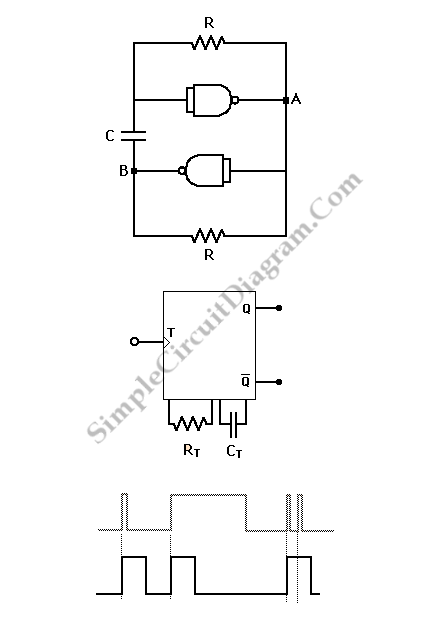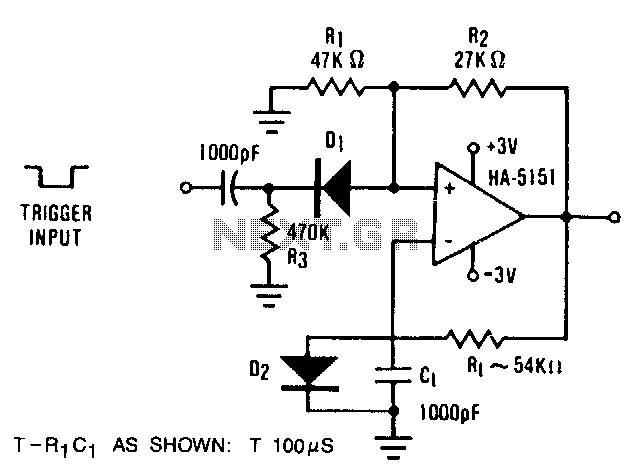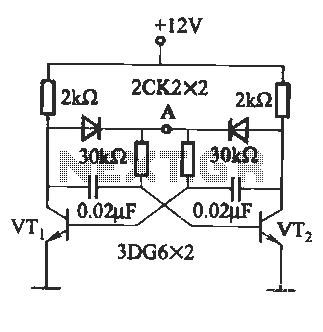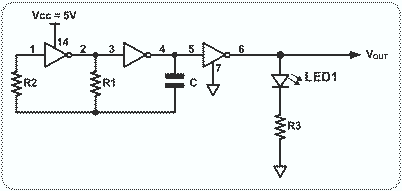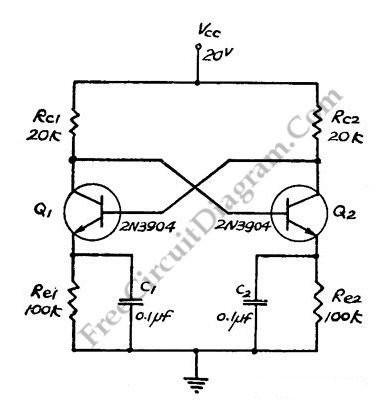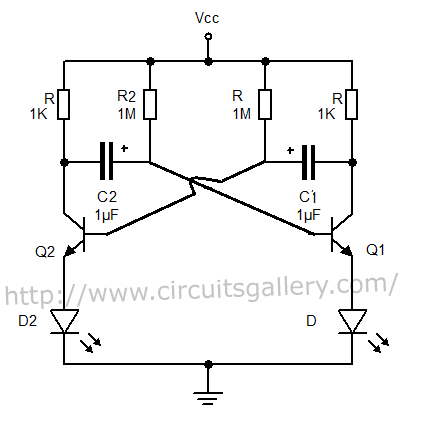
Astable multivibrator

The capacitor C will charge through resistors Ra and Rb, and then discharge through resistor Rb only. The duty cycle may be controlled by the values of Ra and Rb.
In this circuit configuration, a capacitor (C) is utilized to store electrical energy, which is managed through two resistors (Ra and Rb). During the charging phase, the capacitor receives current through both resistors, Ra and Rb, thereby influencing the time it takes to reach its maximum voltage. The values of these resistors play a crucial role in determining the charging rate, as the time constant (τ) of the RC circuit is defined by the equation τ = R_total × C, where R_total is the equivalent resistance seen by the capacitor during charging.
Once the capacitor is fully charged, it enters the discharging phase, where it releases its stored energy solely through resistor Rb. This configuration allows for a distinct control over the discharge time, as the discharge time constant is given by τ_d = Rb × C. The ability to adjust the values of Ra and Rb provides flexibility in managing the duty cycle of the circuit, which is the ratio of the time the capacitor spends in the charging phase to the total period of the cycle. By changing the resistance values, one can effectively modify the duration of both charging and discharging intervals, thus tailoring the performance characteristics of the circuit for specific applications, such as timing circuits, pulse generators, or signal modulation systems.
This circuit can be employed in various electronic applications where precise timing and control are essential, such as in oscillators, timers, or as part of more complex signal processing systems. The design considerations should include the selection of capacitor and resistor values that meet the desired frequency response and duty cycle requirements.The capacitor C will charge through Ra and Rb, and then discharge through Rb only The duty cycle may be controlled by the values of Ra and Rb. 🔗 External reference
In this circuit configuration, a capacitor (C) is utilized to store electrical energy, which is managed through two resistors (Ra and Rb). During the charging phase, the capacitor receives current through both resistors, Ra and Rb, thereby influencing the time it takes to reach its maximum voltage. The values of these resistors play a crucial role in determining the charging rate, as the time constant (τ) of the RC circuit is defined by the equation τ = R_total × C, where R_total is the equivalent resistance seen by the capacitor during charging.
Once the capacitor is fully charged, it enters the discharging phase, where it releases its stored energy solely through resistor Rb. This configuration allows for a distinct control over the discharge time, as the discharge time constant is given by τ_d = Rb × C. The ability to adjust the values of Ra and Rb provides flexibility in managing the duty cycle of the circuit, which is the ratio of the time the capacitor spends in the charging phase to the total period of the cycle. By changing the resistance values, one can effectively modify the duration of both charging and discharging intervals, thus tailoring the performance characteristics of the circuit for specific applications, such as timing circuits, pulse generators, or signal modulation systems.
This circuit can be employed in various electronic applications where precise timing and control are essential, such as in oscillators, timers, or as part of more complex signal processing systems. The design considerations should include the selection of capacitor and resistor values that meet the desired frequency response and duty cycle requirements.The capacitor C will charge through Ra and Rb, and then discharge through Rb only The duty cycle may be controlled by the values of Ra and Rb. 🔗 External reference
